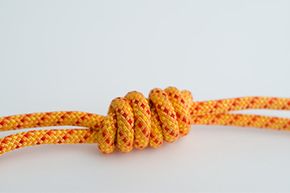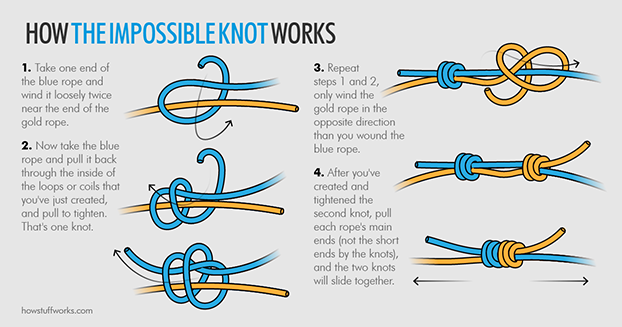Many people think the only knot they need to know how to tie is the one used to tie shoes. That's a bowknot, by the way. Or, to us common folks, bunny ears. But knots come in handy for many more things. Fishermen use a wide variety of knots to fasten everything from nets to boats. Climbers need knots for scaling up mountains — a poorly knotted line can result in injury or even death. And then there are cowboys, farmers and cargo-haulers. The times a good, strong knot can come in handy are limitless.
So what's the best knot of all? There isn't one. It all depends on what you'd like the knot to do. Do you want it to secure something tightly or loosely? Do you want to lash items together or fashion a knot that's adjustable? Sometimes it's handy for a knot to be secure, yet able to release quickly. And what about a knot's complexity? If you can't tie the thing easily, is it really so great?
Advertisement
Pretty much anyone can master the art of knot-tying. Even when it comes to the impossible knot. The impossible knot isn't its technical name; it's actually a nickname for the double fisherman's knot. And it got this name not because it's impossible to tie — it's actually quite easy — but because it's nearly impossible to untie.
The double fisherman is a knot used to tie two ends of a rope or cord together. Actually, it's two knots that slide together. Over time, the knots sort of seal themselves as one, and often the only way to undo the thing is to cut the knots out. Interestingly, the double fisherman's knot is rarely used in fishing. It's common in climbing and other sports. Kayakers and canoeists, for example, sometimes use it with short pieces of rope to create grab handles for their watercraft [source: NetKnots]. So how did it get the name "double fisherman"? Since it's easy to tie, it works well on small lines, such as fishing line [source: Indoor Climbing]. Ready to learn how to tie one?
Advertisement



